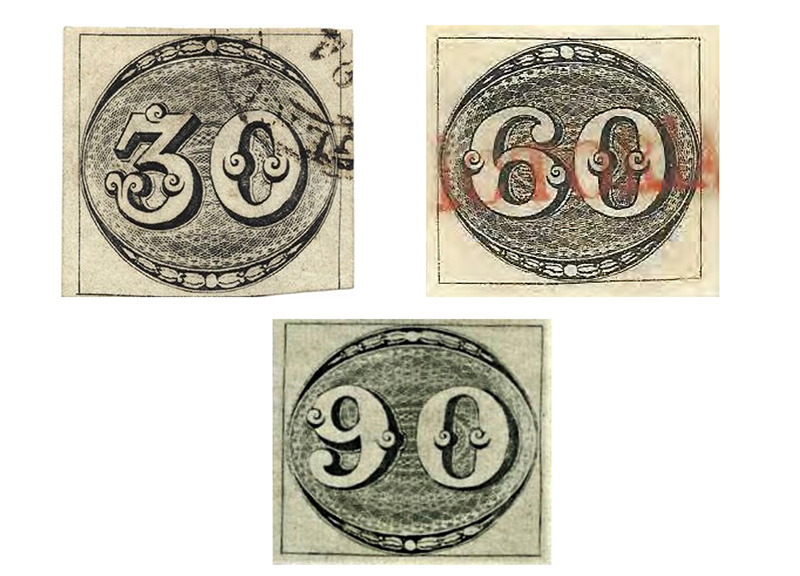A historical treasure and icon of philately
In the world of philately, the Bull’s Eye (Portuguese Olho-de-boi) postage stamp of Brazil holds a special place as one of the most coveted and historically significant stamps ever produced. The first stamps issued by Brazil, on 1 August 1843, it became the country’s first official postage stamp and is revered for its unique design, scarcity, and profound impact on Brazilian postal history. Over the years, this small piece of stamps has captivated the hearts of stamp collectors and enthusiasts worldwide, symbolizing a rich tapestry of history and Brazilian culture. In this article, we will explore the fascinating story behind the Bull’s Eye stamp of Brazil, its historical context, design elements, significance in philatelic circles, and the enduring allure it continues to hold to this day.
Historical context
In the early 19th century, postal systems were rapidly developing across the world to meet the growing demands of communication and trade. Brazil, which had gained independence from Portugal in 1822, faced similar challenges in establishing an efficient postal service. The need for a standardized postal system with pre-paid postage led to the decision to create the country’s first official postage stamp.
Design and issuance
The Bull’s Eye stamp, also known as “Olho de Boi” in Portuguese, was designed by Jean-Baptiste Debret, a French painter and illustrator who played a pivotal role in documenting Brazil’s history through his art. The stamp’s name stems from its central circular design, reminiscent of a bull’s eye, which features the profile of Emperor Dom Pedro II of Brazil.
The design was engraved on steel plates, and the stamps were printed in black ink on thin, soft, and sometimes irregularly cut paper. The first issue of the Bull’s Eye was released on August 1, 1843, in three denominations: 30, 60, and 90 réis, to cover various postal rates based on distance and weight. Each stamp was inscribed with “CORREIO GERAL DO RIO DE JANEIRO” (General Post Office of Rio de Janeiro) at the top, and the denomination in the center. Around the circular design were decorative elements, including a laurel wreath and the words “ESTANCOS POSTAES” (postal stationery).
Significance and rarity
The Bull’s Eye postage stamp holds immense significance for multiple reasons. Firstly, it was Brazil’s pioneering step towards creating a national postal system, marking an essential moment in the nation’s history. Secondly, the stamp’s issuance predated the famous Penny Black of Great Britain by a few months, making it one of the earliest postage stamps in the world.
Moreover, due to the primitive printing techniques and the delicate paper used, the Bull’s Eye stamps were prone to damage and degradation. This resulted in low survival rates, further contributing to its rarity and increasing its value among stamp collectors. Today, surviving specimens of the Bull’s Eye are considered philatelic treasures, and collectors are willing to pay significant sum of momey to collect and own one.
Philatelic curiosity and appeal
The Bull’s Eye stamp has an undeniable allure for philatelists worldwide. Its historical significance, combined with its rarity and unique design, make it an object of desire for collectors who seek not only to own a piece of Brazilian history but also to connect with the wider history of postage and communication.
Despite its popularity, the Bull’s Eye is also shrouded in mystery and speculation. As no official records of the stamp’s production and numbers exist, philatelists have engaged in extensive research and debate regarding the true quantities issued and the various plate varieties.
Investment value and market demand
The Bull’s Eye postage stamp has consistently been regarded as a valuable and sound investment by collectors and investors alike. The scarcity of surviving specimens ensures that the stamp’s value remains robust, and it often appreciates over time. Auction houses and dealers worldwide have witnessed fierce bidding wars over well-preserved examples of the Bull’s Eye, further fueling its appeal as a solid investment for collectors. Moreover, their limited supply ensures that demand remains high, driving up their market value. As the world of stamp collecting continues to thrive, Bull’s Eye stamps are likely to maintain their investment allure for generations to come.
Preservation and conservation
The value of Bull’s Eye stamps extends beyond mere monetary worth. These stamps serve as a reminder of the importance of preserving cultural heritage and historical artifacts. Philatelic societies and stamp collectors worldwide work diligently to conserve and protect these stamps for future generations. Through careful archival, restoration, and exhibition efforts, they ensure that the legacy of Bull’s Eye stamps lives on, contributing to the broader understanding of postal history.
Nowadays, the Bull’s Eye postage stamp of Brazil remains an enduring symbol of the country’s rich postal history and a cornerstone in the world of philately. Its exceptional design, historical importance, and rarity have secured its position as one of the most sought-after stamps by collectors and investors alike. Their enduring allure is a testament to the profound impact that postage stamps have had on shaping societies and the value we place on preserving tangible reminders of our shared history. As time goes on, the Bull’s Eye postage stamp will continue to captivate the imaginations of philatelists, cementing its status as an iconic treasure of the stamp collecting world for generations to come.











Leave a Reply